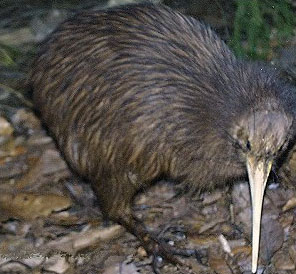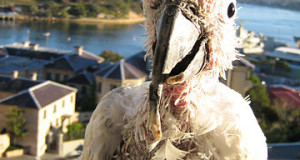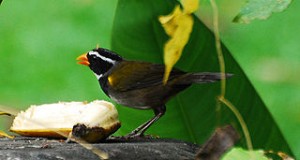Traditional wisdom holds that birds rely chiefly upon eyesight and hearing in getting about. This month (July, 2008), however, biologists at Germany’s Max Planck Institute of Ornithology established that a number of species use olfaction (sense of smell) in navigation, foraging and, pe rhaps, recognition of other individuals.
rhaps, recognition of other individuals.
Those who study and observe birds have long suspected this, at least as concerns a few species. While in Costa Rica on field research, I got into the habit of setting out baits in order to see what animals might show up to feed (in contrast to popular belief, rainforests are not teeming with readily visible animals. The animals are there in droves, but most go about their business undetected). After placing a road-killed giant anteater in a heavily-forested area, I was quite surprised to find that turkey vultures (Catharses aura) appeared at the carcass in short order. I had always assumed that these birds detected food by using their sharp eyes while soaring high above ground. Yet they found the anteater very quickly, despite being unable to see it due to the dense tree cover. Could they have detected its scent?
The nostrils of New Zealand’s brown kiwi, which forages for earthworms at night, are placed at the tip of its bill. This odd arrangement has long caused ornithologists to speculate that the flightless bird locates its prey by scent. Another oddball from that island, the kakapo, searches for fruit at night. The world’s only nocturnal, flightless parrot, the kakapo is one of the birds now known to have a powerful sense of smell.
The biologists at Max Planck studied the olfactory receptor genes, which form the molecular basis of the sense of smell, of various species (including those mentioned above) in coming to their conclusions. Their results were confirmed by examinations of the olfactory lobes of the brain, which were larger in those species thought to have a well-developed sense of smell.
It is amazing and inspiring that there is so much of importance still to be discovered about very basic areas of bird biology. Pay close attention to what pet and wild birds do – great opportunities await careful observers.
You can learn more about the work of the Max Planck Institute of Ornithology at:
http://www.mpg.de/english/institutesProjectsFacilities/instituteChoice/ornithologie/index.html
Brown Kiwi image courtesy of Malene Thyssen, http://commons.wikimedia.org/wiki/User:Malene
 That Bird Blog – Bird Care and History for Pet Birds
That Bird Blog – Bird Care and History for Pet Birds



Dear mister/miss,
Could you please answer these questions and send it to my e-mail (jarivisbeen@live.nl).
It would really help me with my paper. Thank you in advance for the effort.
– What are the exact living conditions of the kakapo?
– In what way is the kakapo protected?
– What does the kakapo drink and eat the most?
– What kind of a tree has to blossom to trigger the kakapo to breed?
– Is the percentage important of trees necessary, in the kakapo’s territory, to trigger the kakapo to breed, or is the quantity of blossom important?
– What exactly and how much should the kakapo eat to become fertile?
– Does the nutrition have influence on the “mum” kakapo to give birth to a boy or a girl?
– Are there no ways to stimulate kakapo’s to breed, like sounds or something else?
– Where does the kakapo make its nest?
– What is your opinion about the kakapo?
Yours sincerely Jari
Hello,
Sorry for the delay…largely without power after a hurricane here in NY. You can find a wealth of up-to-date information here http://bitly.com/YGJN0Y. Best, Frank